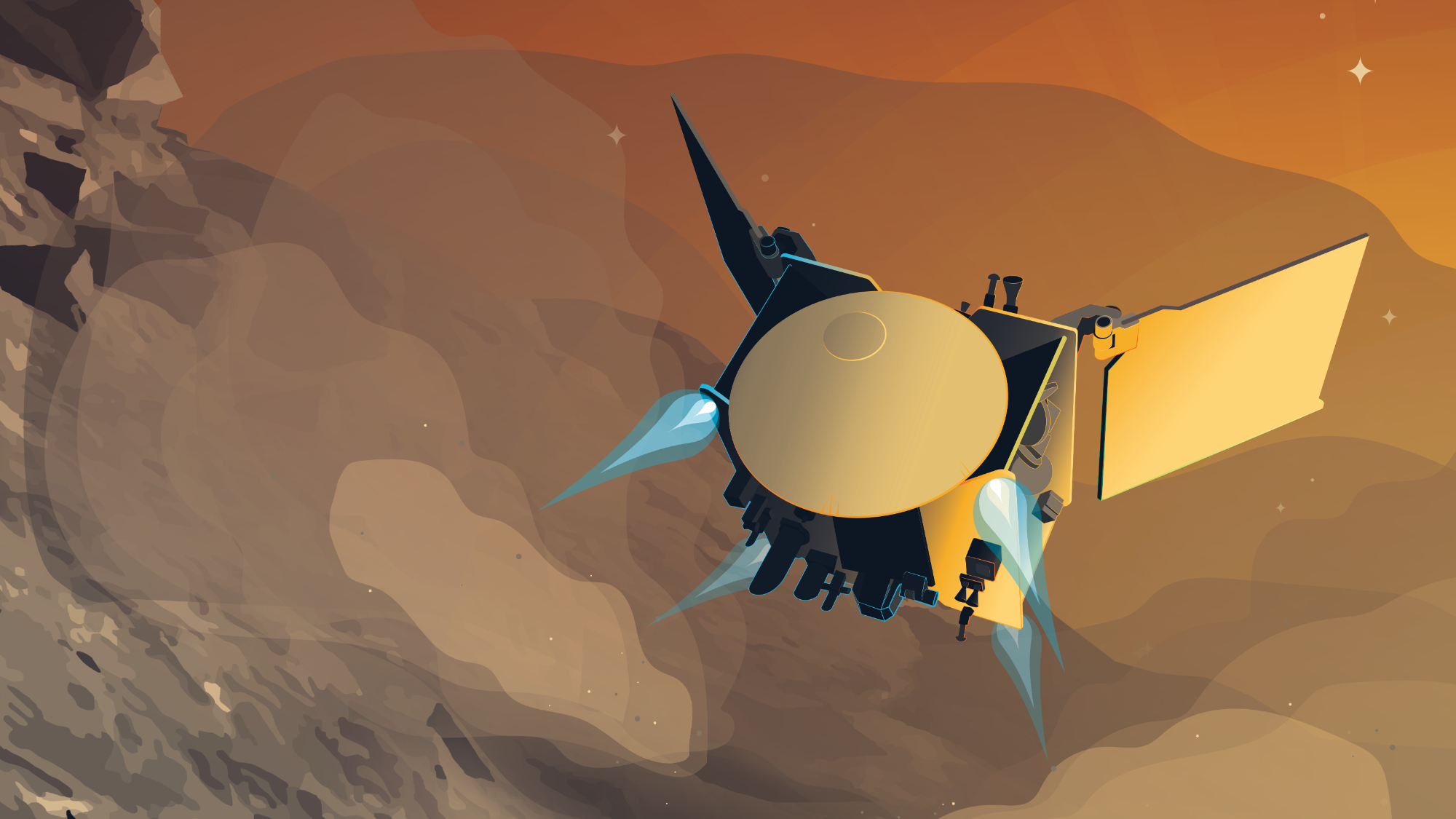
Two months ago, NASA's OSIRIS-REx probe dropped home samples of asteroid Bennu and is now headed on a bonus mission with leftover fuel to yet another space rock. During this extended voyage, the spacecraft will pass within 46.5 million miles (74.8 million kilometers) of the sun's surface, flying within the orbit of Venus and 25 million miles (40.2 million kilometers) closer to the sun than it was designed to operate.
To prepare the spacecraft for the imminent blast of radiation, this week the mission team is tucking in one of the probe's two solar panels to provide shade for its most sensitive instruments. The second panel is positioned to face the sun in order to power the OSIRIS-APEX probe, as it's now called due to the secondary mission.
Computer simulations show holding the spacecraft in such a fixed orientation as it goes around the sun should keep it from overheating, "but any time you take a piece of space flight hardware beyond the design criteria you incur risk," Dani Mendoza DellaGiustina of the University of Arizona, who is the principal investigator of the new mission, said in a statement.
OSIRIS-APEX and its instruments will be pushed beyond their limit multiple times starting Jan. 2, 2024, which is when the first solar approach will happen. After five more such passes and three boosts from Earth's gravity, the probe, which is running on a quarter of its maneuvering fuel, will encounter its target, a peanut-shaped asteroid Apophis in April 2029.
If it all works out as planned, the timing would be perfect. The space rock, as wide as the Empire State Building, is expected to then glide within 20,000 miles (32,000 kilometers) of Earth, the closest any cosmic object of that size has gotten to our planet. (NASA has ruled out any threat from the space rock to Earth for at least a century. You may be able to, however, glance at Apophis for a few hours on the night of April 13, 2029.)
A remnant of the formation of the solar system 4.6 billion years ago, scientists think Apophis started out in the crowded asteroid belt between Mars and Jupiter and was later flung into the inner solar system and toward its current orbit that's closer to Earth.
Since its discovery via a fleeting sighting in 2004, scientists have precisely charted the asteroid's orbit, size and rotation. The space rock appears to be wobbling back and forth, and slightly tilted such that it comes full circle once every 30 hours. Its delicate posture is expected to suffer further when it nears Earth in 2029, as our planet's gravitational tides would likely change the rock's orbit, its spin, and may even trigger surface-altering quakes or landslides.
When OSIRIS-APEX reaches the rock, the probe will fire its thrusters to dislodge and kick up tiny rocks and dust loosely bound to the asteroid's surface. The material would give scientists a glimpse into its structure and chemical makeup.
Until then though, it will remain silent except for communicating with its critical systems. Its instruments will be turned on and tested once the probe is farther from the sun, likely in March next year.







